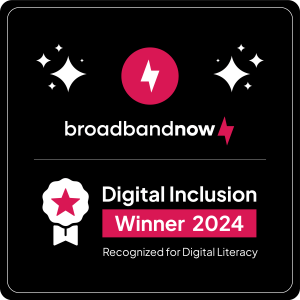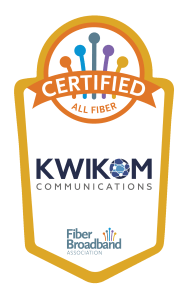Fiber Internet: The ABCs
In an era where connectivity is key, fiber-optic internet has emerged as the gold standard for fast, reliable internet access. But for many, the terminology surrounding fiber can seem like a foreign language. Fear not! In this blog, we’ll break down the jargon and shed light on what fiber internet is all about, while keeping it light, easy, and informative. Looking for the benefits of lightning-fast fiber internet at your home? Check out KWIKOM for reliable fiber-optic internet solutions that bring the speed of light to your doorstep.

What is Fiber-Optic Internet?
Let’s start with the basics. Fiber-optic internet, often just called “fiber,” is a type of internet connection that uses thin strands of glass or plastic to transmit data using light signals. These fibers are bundled together to form cables, creating a network that can deliver data at incredible speeds.
Fiber to the Home (FTTH)
One of the most exciting developments in internet technology is Fiber to the Home (FTTH). This means that the cables run directly to individual residences, providing lightning-fast internet speeds right to your doorstep. With KWIKOM’s Fiber to the Home service, you can enjoy the benefits of high-speed internet without compromise. Say goodbye to outdated infrastructure and hello to seamless connectivity right from KWIKOM.
Installation Process: Bringing Fiber to Your Home
So, how exactly does fiber internet make its way from the provider to your home? Let’s break it down in simple terms.
Imagine your internet provider as a friendly delivery service bringing packages directly to your doorstep. In this case, the package is lightning-fast internet, delivered via fiber-optic cables.
First, the provider lays down the cables, much like laying down a network of roads connecting different neighborhoods. These cables are either buried underground or strung up on utility poles, ensuring they reach every corner of your area. (Curious about the construction process? Learn more about it here!)
Now, imagine your home as a house waiting to receive its special delivery. A technician connects the fiber-optic cable to your home’s network interface device (NID), which acts like the mailbox for your internet connection. It’s where the fiber-optic cable ends and where your home’s internet journey begins.
But how does the internet travel from the NID into your home? Enter the Optical Network Terminal (ONT), your home’s personal translator. The ONT takes the light signals from the fiber-optic cable and converts them into a language your devices can understand, much like a magic decoder ring translating secret messages.
When KWIKOM technicians connect the fiber-optic cable to your home’s network interface device (NID) and install the Optical Network Terminal (ONT), you’re on your way to experiencing the benefits of KWIKOM’s reliable fiber internet. It’s like upgrading from a dirt road to a superhighway, with data zooming to and from your devices at the speed of light.
Key Terminology
That’s all great, but what does it mean? Let’s take a look at the most used fiber terminology and what it means:
Bandwidth: The amount of data that can be transmitted in a given amount of time. With fiber, bandwidth is typically much higher compared to other types of internet connections.
Latency: The time it takes for data to travel from one point to another. Fiber-optic internet has low latency, making it ideal for activities like online gaming and video calls.
Speed: Refers to how fast data can be transmitted over the internet. Fiber offers incredibly fast download and upload speeds, perfect for streaming, gaming, and working from home.
Fiber-Optic Cable: The actual physical cable made of glass or plastic fibers that transmit data using light signals.
ONT (Optical Network Terminal): A device that converts the light signals from the fiber-optic cable into electrical signals that can be used by your devices.
Benefits of Fiber Internet
Now that we’ve covered the basics, let’s talk about its benefits and why fiber is the preferred choice for many internet users:
- Speeds: Fiber-optic internet offers speeds that can reach up to 1 Gbps or more, with symmetrical upload and downloads, allowing for seamless streaming, gaming, and downloading.
- Reliability: Fiber is less susceptible to interference from electromagnetic signals or weather conditions, resulting in a more stable connection.
- Future-Proof: As technology advances, fiber is well-equipped to handle the demands of tomorrow’s internet, making it a smart long-term investment.
- Symmetrical Speeds: Unlike traditional connections, fiber offers symmetrical speeds, meaning you get the same lightning-fast upload speeds as you do for downloads.
In conclusion, fiber-optic internet is the future of high-speed connectivity, offering unparalleled speed, reliability, and performance. Whether you’re running a business, streaming your favorite shows, gaming with friends, or working from home, it ensures that you stay connected at the speed of light. So, the next time you hear someone talking about fiber, you’ll be armed with the knowledge to join the conversation with confidence. Stay connected, stay informed, and discover why KWIKOM is the preferred choice for many users, offering local support, reliability and symmetrical speeds for both uploads and downloads.




